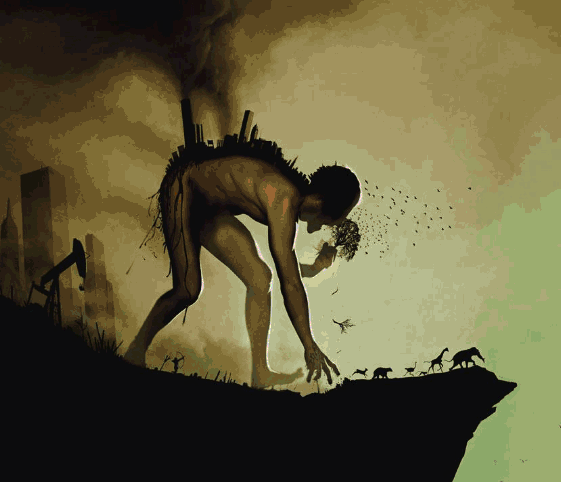 (Illustration found here).
(Illustration found here).
Sunny and windy this early-evening Thursday on California’s north coast — way-windy on the beach this afternoon, which can spoil the flavor of the moment.
Really bright, though, which is nice…
In the monkey-go-around of the nauseating T-Rump freak-show in DC, we have a near-perfect distraction from the main, most-single issue of our age, climate change — this via EurekAlert from yesterday:
Human-generated greenhouse gases and atmospheric particles were affecting global drought risk as far back as the early 20th century, according to a study from NASA’s Goddard Institute for Space Studies (GISS) in New York City.
The study, published in the journal Nature, compared predicted and real-world soil moisture data to look for human influences on global drought patterns in the 20th century.
Climate models predict that a human “fingerprint” — a global pattern of regional drying and wetting characteristic of the climate response to greenhouse gases — should be visible early in the 1900’s and increase over time as emissions increased.
Using observational data such as precipitation and historical data reconstructed from tree rings, the researchers found that the real-world data began to align with the fingerprint within the first half of the 20th century.
The team said the study is the first to provide historical evidence connecting human-generated emissions and drought at near-global scales, lending credibility to forward-looking models that predict such a connection.
According to the new research, the fingerprint is likely to grow stronger over the next few decades, potentially leading to severe human consequences.
And just to display our proximity to out-of-control danger, leading to ‘severe human consequences‘ — from CBC News this morning:
Permafrost in some areas of the Canadian Arctic is thawing so fast that it’s gulping up the equipment left there to study it.
“The ground thaws and swallows it,” said Merritt Turetsky, a University of Guelph biologist whose new research warns the rapid thaw could dramatically increase the amounts of greenhouse gases released from ancient plants and animals frozen within the tundra.
“We’ve put cameras in the ground, we’ve put temperature equipment in the ground, and it gets flooded. It often happens so fast we can’t get out there and rescue it.
“We’ve lost dozens of field sites. We were collecting data on a forest and all of a sudden it’s a lake.”
…
Climate scientists have assumed a slow, steady erosion of permafrost and a similar pace of carbon release.
Turetsky and her colleagues found something different.
Instead of a few centimetres of thaw a year, several metres of soil can destabilize within days.
Landscapes collapse into sinkholes.
Hillsides slide away to expose deep permafrost that would otherwise have remained insulated.
…
Nearly one-fifth of Arctic permafrost is now vulnerable to rapid warming,
Turetsky’s paper suggests.
Plenty of it is in Canada, such as in the lowlands south of Hudson Bay.
Soil analysis found those quickly thawing areas also contain the most carbon.
Nearly 80-percent of them hold at least 70 kilograms of carbon per cubic metre.
That suggests permafrost is likely to release up to 50-percent more greenhouse gases than climate scientists have believed.
As well, much of it will be released as methane, which is about 30-percent more efficient at trapping heat than carbon dioxide.
“These are minimum estimates,” Turetsky said.
“We’ve been very conservative.”
Despite the rapid thaw, it’ll be decades before the extra carbon release starts to influence global climate.
“We’ve got a bit of time.”
Yeah, right, hopefully not one of those famous, understated last warnings…